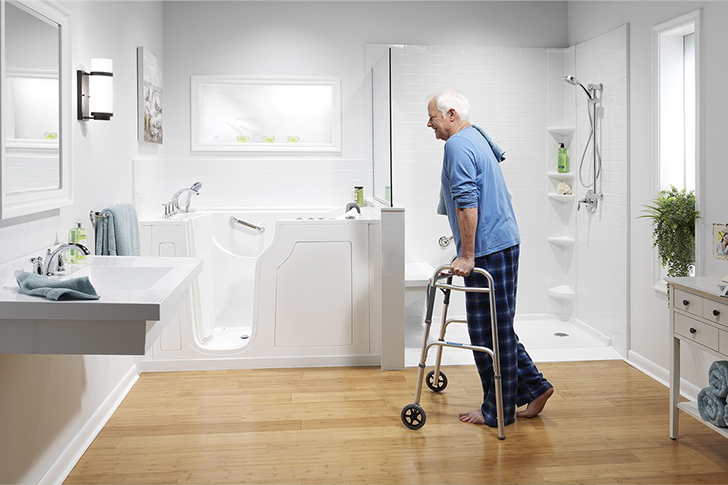Walk-in bathtubs offer a blend of comfort, accessibility, and safety, making them an attractive option for seniors aiming to maintain an independent lifestyle. As the population ages, more attention is being paid to how homes can be adapted to meet changing mobility needs. In this article, we will explore the cost, available discounts, and factors that make walk-in tubs a worthwhile investment for seniors.

Understanding the Cost of Walk-In Bathtubs
Walk-in bathtubs are designed with doors that open and close at the side or front of the tub, allowing users to enter without having to climb over the edge. While these tubs offer significant safety and health benefits, they are generally more expensive than traditional bathtubs. Prices for walk-in tubs can vary significantly based on features such as therapeutic systems like hydrotherapy jets, air jets, or both. Basic models typically start around $1,500, but prices can escalate to $20,000 for high-end models. Installation costs can add another $1,000 to $5,000 to the total price, depending on the complexity of the job.
Finding Discounts and Assistance Programs
Seniors and their families often worry about the expense of installing a walk-in tub. Fortunately, several options can help manage these costs:
1. Medicare and Medicaid: It’s a common misconception that Medicare covers the cost of walk-in tubs; unfortunately, they are generally not considered durable medical equipment. However, if the tub is part of a doctor-prescribed treatment or modification, there might be some degree of coverage under Medicare Part B.
2. Veterans’ Benefits: Veterans may qualify for home modification grants through the Department of Veterans Affairs (VA) if a walk-in tub is recommended as part of a medical necessity. Programs such as the Home Improvements and Structural Alterations (HISA) grant allow veterans to make modifications to their homes for disability access.
3. Non-Profit Organizations and State Programs: Some non-profit organizations offer assistance or funding for seniors to modify their homes. Additionally, state programs may provide grants or loans that can be used toward purchasing a walk-in tub.
4. Manufacturer Discounts and Financing Plans: Many manufacturers offer seasonal discounts, promotional deals, and financing options that can make walk-in tubs more affordable. It’s advisable to inquire directly with manufacturers or authorized dealers for current promotions.
The Value of Investing in a Walk-In Bathtub
While the initial cost might seem high, the benefits of installing a walk-in bathtub can significantly outweigh these expenses, particularly when considering the long-term health and safety improvements.
The Importance of Safety Features: Walk-in bathtubs are engineered with safety in mind. Features like low threshold entries, wide doors, built-in seats, anti-slip flooring, and easy-to-reach controls help reduce the risk of falls—a leading cause of serious injuries among seniors. According to the Centers for Disease Control and Prevention (CDC), more than one out of four older people falls each year, but less than half tell their doctor. Installing a walk-in tub can be a proactive step towards preventing such incidents.
Therapeutic Benefits: Many walk-in tubs offer therapeutic features that can alleviate pain and improve circulation. Hydrotherapy jets, for instance, are known to benefit individuals with arthritis, back pain, and muscle tension. This kind of therapy can help seniors maintain a healthier lifestyle, potentially reducing medical bills and the need for certain medications.
Making an Informed Decision
When considering the purchase of a walk-in bathtub, it’s important to assess the full range of available options:
1. Size and Fit: Make sure the tub fits comfortably in the bathroom space and that it is the right size for the user. Adjustable features such as the height of the built-in seat can make a significant difference in comfort.
2. Quality and Durability: Opt for tubs constructed from high-quality materials that offer longevity and easy maintenance. Acrylic and fiberglass are popular options due to their durability and ease of cleaning.
3. Warranties and After-Sale Service: Look for products that come with strong warranties and reliable customer service from the manufacturer. A good warranty can protect your investment and offer peace of mind.
4. Consult with Professionals: Seek advice from healthcare providers, occupational therapists, or specialists in senior living solutions. They can provide valuable insights based on the specific needs and health conditions of the user.
In conclusion, while the upfront costs of walk-in bathtubs can be high, the safety and therapeutic benefits they offer make them a worthwhile investment for seniors looking to age in place. By taking advantage of available discounts, assistance programs, and doing thorough research on options, seniors and their families can find an affordable solution that enhances the quality of life.


Recent Comments